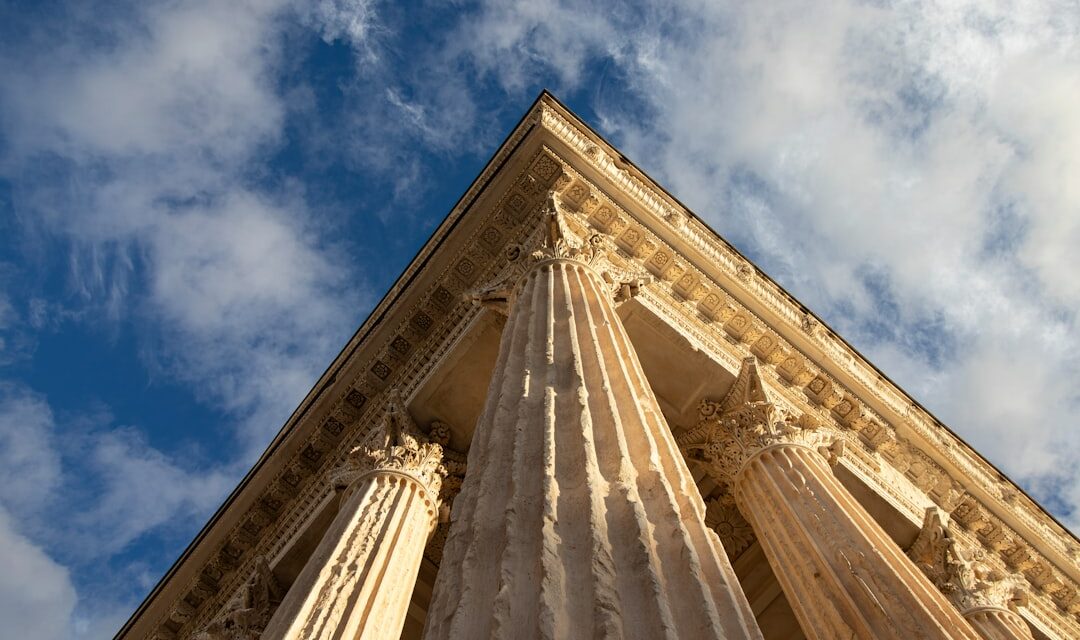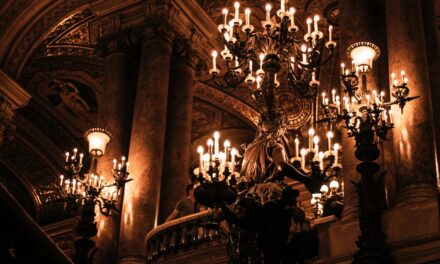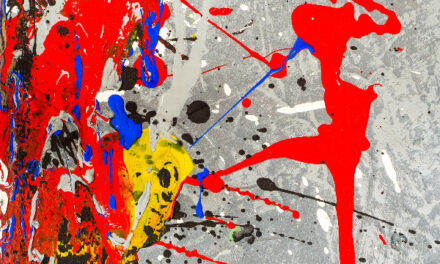Ancient Roman art originated from the artistic traditions of the Etruscans, who inhabited the Italian peninsula prior to Rome’s ascendancy. The Etruscans were accomplished craftsmen, and their influence is evident in early Roman art, particularly in the utilisation of terracotta and bronze for sculpture and in the advancement of architectural methods. As Rome expanded its power and influence, it began to incorporate artistic styles and techniques from the various cultures it encountered through conquest and trade.
This resulted in a rich and diverse artistic tradition that assimilated elements from Greek, Egyptian, and other Mediterranean civilisations. The early Romans also drew inspiration from their own mythology and history, producing art that commemorated their legendary heroes and deities. This is evident in the numerous sculptures and reliefs depicting scenes from Roman mythology, as well as in the intricate mosaics and frescoes that adorned the walls of Roman villas and public edifices.
The Romans also developed a keen interest in portraiture, creating lifelike busts and statues of emperors, statesmen, and other prominent figures. This emphasis on realism and individuality would become a distinguishing feature of Roman art.
Summary
- Ancient Roman art was heavily influenced by Etruscan and Greek art, but developed its own unique style over time.
- Ancient Roman art was inspired by a wide range of subjects, including mythology, history, and everyday life.
- The evolution of ancient Roman art can be seen in the transition from realistic and idealized sculptures to more abstract and decorative styles.
- Key characteristics of ancient Roman art include a focus on realism, grandeur, and the use of symbolism and allegory.
- Ancient Roman art played a significant role in society, serving as a tool for propaganda, education, and the glorification of the ruling class.
Influences and Inspirations in Ancient Roman Art
Influence of Greek Art
The Romans admired the naturalism and idealism of Greek sculpture and sought to emulate it in their own work. This can be seen in the many Roman copies of famous Greek statues, as well as in the development of a distinctly Roman style that blended Greek influences with indigenous traditions.
Eastern Influences
In addition to Greek art, the Romans also drew inspiration from the art of Egypt and the Near East. The Romans were fascinated by the exoticism of these cultures and incorporated elements of their art into their own, such as the use of Egyptian motifs in decorative arts and the adoption of Near Eastern architectural forms.
Roman Innovations
This cross-cultural exchange enriched Roman art, giving it a cosmopolitan character that reflected the diversity of the Roman Empire. The Romans were also skilled engineers and architects, and they developed innovative building techniques that allowed them to create monumental structures such as aqueducts, amphitheatres, and temples.
The Evolution of Ancient Roman Art

The art of ancient Rome underwent significant changes over time, reflecting the shifting political, social, and cultural dynamics of the Roman Empire. In its early stages, Roman art was heavily influenced by Etruscan and Greek styles, but as Rome expanded its influence across the Mediterranean, it began to incorporate elements from other cultures into its artistic repertoire. This led to a period of eclecticism in Roman art, where artists freely borrowed from different traditions to create a uniquely Roman aesthetic.
During the reign of Augustus, the first Roman emperor, there was a renewed interest in classical Greek art and architecture, which led to a revival of classical forms and motifs in Roman art. This period, known as the Augustan Age, saw the construction of grand public buildings and monuments that emulated the architectural styles of ancient Greece. The Romans also developed new artistic techniques, such as the use of concrete for building construction, which allowed them to create larger and more durable structures.
In the later years of the Roman Empire, as it entered a period of decline, there was a shift towards more decorative and ornate forms of art, such as intricate mosaics and elaborate wall paintings. This reflects the growing influence of eastern cultures on Roman art, as well as the desire to escape from the political and social turmoil of the time. Despite these changes, Roman art continued to be characterised by its emphasis on realism, individuality, and grandeur.
Key Characteristics and Themes in Ancient Roman Art
Ancient Roman art is characterised by several key characteristics and themes that reflect the values and aspirations of Roman society. One of the most prominent features of Roman art is its emphasis on realism and naturalism. Roman artists were skilled at capturing the human form in all its complexity, creating lifelike portraits and sculptures that conveyed a sense of individuality and personality.
This focus on realism can be seen in the many busts and statues of emperors and other prominent figures, as well as in the detailed reliefs that adorned public buildings. Another important theme in Roman art is its celebration of power and authority. The Romans were a highly militaristic society, and this is reflected in their art, which often depicted scenes of conquest and triumph.
This can be seen in the many reliefs commemorating military victories, as well as in the grand monuments and arches that were erected to honour victorious generals and emperors. Roman art also celebrated the virtues of piety, duty, and civic responsibility, reflecting the moral values that were central to Roman society. In addition to these themes, Roman art also had a strong decorative element, with a particular emphasis on ornate patterns and motifs.
This can be seen in the intricate mosaics that adorned floors and walls, as well as in the elaborate frescoes that decorated public buildings and private homes. These decorative elements served not only to beautify spaces but also to convey symbolic meanings and narratives, such as scenes from mythology or daily life.
The Role of Ancient Roman Art in Society
Ancient Roman art played a central role in shaping the cultural identity of Rome and its empire. Art was used as a means of expressing political power and authority, with emperors commissioning grand monuments and statues to commemorate their achievements and assert their legitimacy. Public buildings were adorned with elaborate decorations that conveyed messages of civic pride and unity, while private homes were decorated with artworks that reflected the tastes and values of their owners.
Art also played an important role in religious rituals and ceremonies, with temples and shrines being adorned with sculptures and reliefs that honoured the gods and goddesses of the Roman pantheon. These artworks served not only as objects of veneration but also as a means of communicating religious beliefs and narratives to worshippers. In addition to its religious function, art was also used as a form of propaganda, with public monuments and sculptures being used to convey messages of imperial power and conquest.
Art also had a social function in Roman society, serving as a means of social distinction and status. Wealthy patrons would commission artworks to adorn their homes as a way of displaying their wealth and sophistication, while artists themselves occupied a respected position in society as skilled craftsmen and creators. Art was also used as a form of entertainment, with public performances such as gladiatorial contests being accompanied by music, dance, and theatrical performances.
Notable Artists and Artworks in Ancient Roman Art

The Masters of Roman Art
One such artist is Apelles, a renowned painter who was active during the 4th century BCE. Apelles was celebrated for his mastery of colour and form, as well as his ability to capture the likeness and character of his subjects. Although none of his original works have survived, he was highly influential on subsequent generations of artists.
Sculpting the Roman Legacy
Another important figure in Roman art is Phidias, a sculptor who is best known for his monumental statue of Zeus at Olympia, one of the Seven Wonders of the Ancient World. Phidias was renowned for his skill in creating lifelike sculptures that conveyed a sense of grandeur and power. His work had a profound impact on Roman sculpture, inspiring artists to emulate his style and techniques.
Timeless Masterpieces of Ancient Rome
In addition to individual artists, there are several notable artworks from ancient Rome that have stood the test of time. One such work is the Ara Pacis Augustae, an altar dedicated to peace that was commissioned by the Emperor Augustus. The altar is adorned with intricate reliefs depicting scenes from Roman mythology and history, as well as portraits of members of the imperial family. Another famous artwork is the Colosseum, an iconic amphitheatre that was used for gladiatorial contests and other public spectacles. The Colosseum is a testament to the engineering prowess of the Romans and remains one of the most recognisable symbols of ancient Rome.
Legacy and Influence of Ancient Roman Art
The legacy of ancient Roman art can be seen in its enduring influence on Western art and culture. The Romans were skilled at assimilating artistic styles from different cultures and adapting them to their own aesthetic sensibilities, creating a rich artistic tradition that has left a lasting impact on subsequent generations. Many elements of Roman art, such as its emphasis on realism, naturalism, and grandeur, have been embraced by later artists and continue to inform artistic practice today.
The Romans also made significant contributions to architectural innovation, developing techniques such as concrete construction that have had a profound impact on the built environment. The grand public buildings and monuments that they constructed continue to inspire awe and admiration for their engineering prowess. In addition to its artistic achievements, ancient Rome also made important contributions to art theory and criticism, with writers such as Pliny the Elder documenting the lives and works of famous artists.
The legacy of ancient Roman art can also be seen in its impact on contemporary society. Many aspects of Roman art continue to resonate with modern audiences, such as its celebration of power and authority, its emphasis on civic responsibility, and its use of art as a form of propaganda. The enduring popularity of Roman mythology and history in popular culture is a testament to the lasting appeal of Roman art.
In conclusion, ancient Roman art is a testament to the creativity, skill, and ingenuity of one of history’s greatest civilisations. From its humble origins in Etruscan and Greek traditions to its flourishing under the Roman Empire, Roman art reflects the diverse influences that shaped it into a unique artistic tradition. Its legacy continues to inspire artists and captivate audiences around the world, making it an enduring testament to the power of human creativity.
If you are interested in learning more about art history, you may also want to explore the post-impressionism movement. Post-impressionism was a reaction against the naturalism of impressionism and focused on the emotional and symbolic aspects of art. To delve deeper into this fascinating period, check out the article on post-impressionism here.
FAQs
What is Ancient Roman Art?
Ancient Roman art refers to the visual arts made in Ancient Rome and in the territories of the Roman Empire. It includes a wide range of artistic styles and mediums, such as sculpture, painting, architecture, and decorative arts.
What are the key characteristics of Ancient Roman Art?
Ancient Roman art is known for its realism, attention to detail, and emphasis on portraying the human form. It also often incorporated elements of Greek art, such as idealized proportions and mythological themes.
What are some famous examples of Ancient Roman Art?
Some famous examples of Ancient Roman art include the Colosseum, the Pantheon, the Ara Pacis, the Arch of Constantine, and the sculptures of Roman emperors and gods.
What materials were commonly used in Ancient Roman Art?
Ancient Roman artists used a variety of materials, including marble, bronze, terracotta, and frescoes. They also made extensive use of mosaic and glass for decorative purposes.
What were the main purposes of Ancient Roman Art?
Ancient Roman art served a variety of purposes, including commemorating important events and individuals, glorifying the Roman state and its leaders, and providing decoration for public and private spaces.
How did Ancient Roman Art influence later artistic traditions?
Ancient Roman art had a significant influence on later artistic traditions, particularly during the Renaissance period. Its emphasis on naturalism and the human form, as well as its architectural innovations, continued to inspire artists and architects for centuries.




